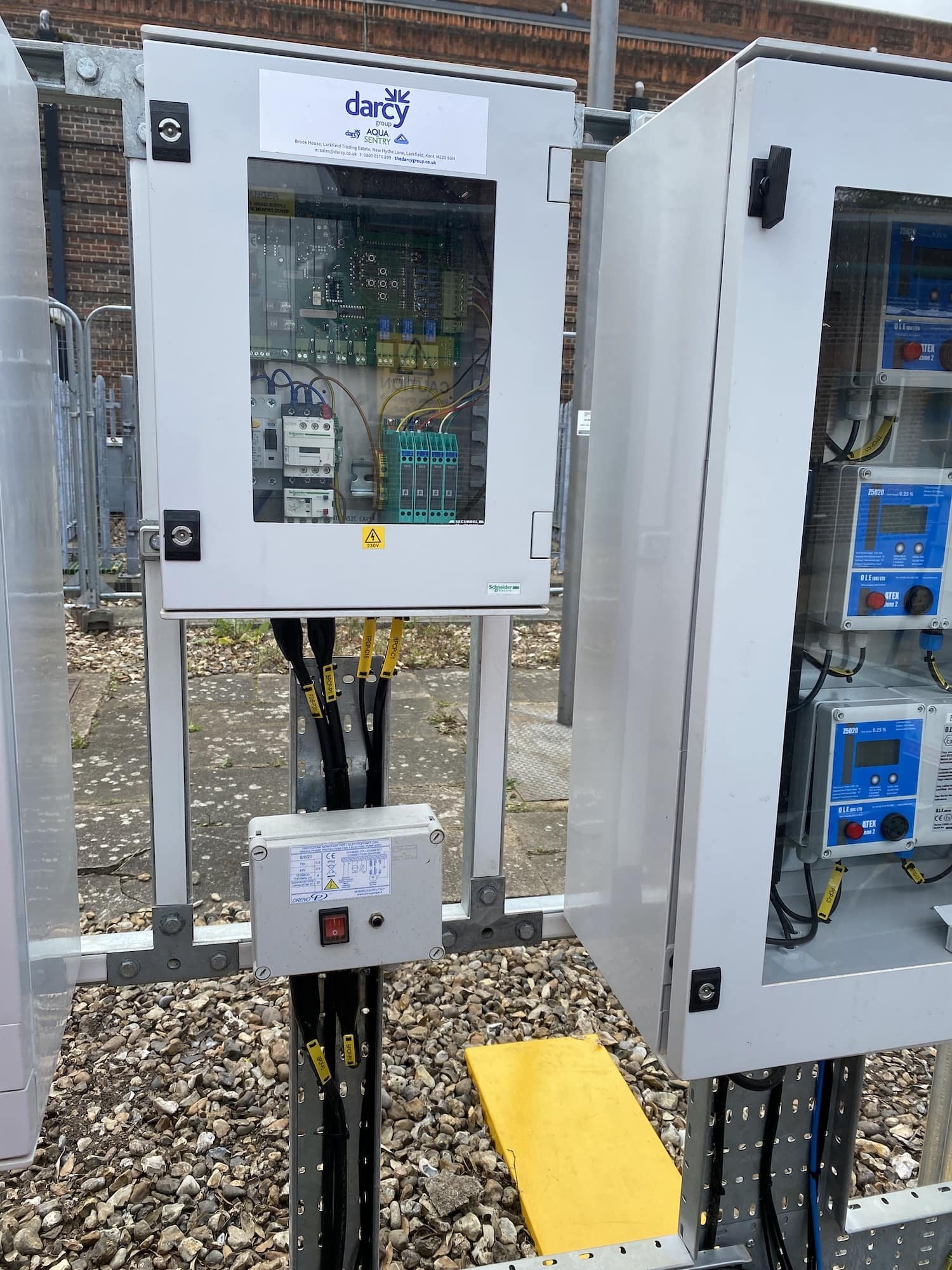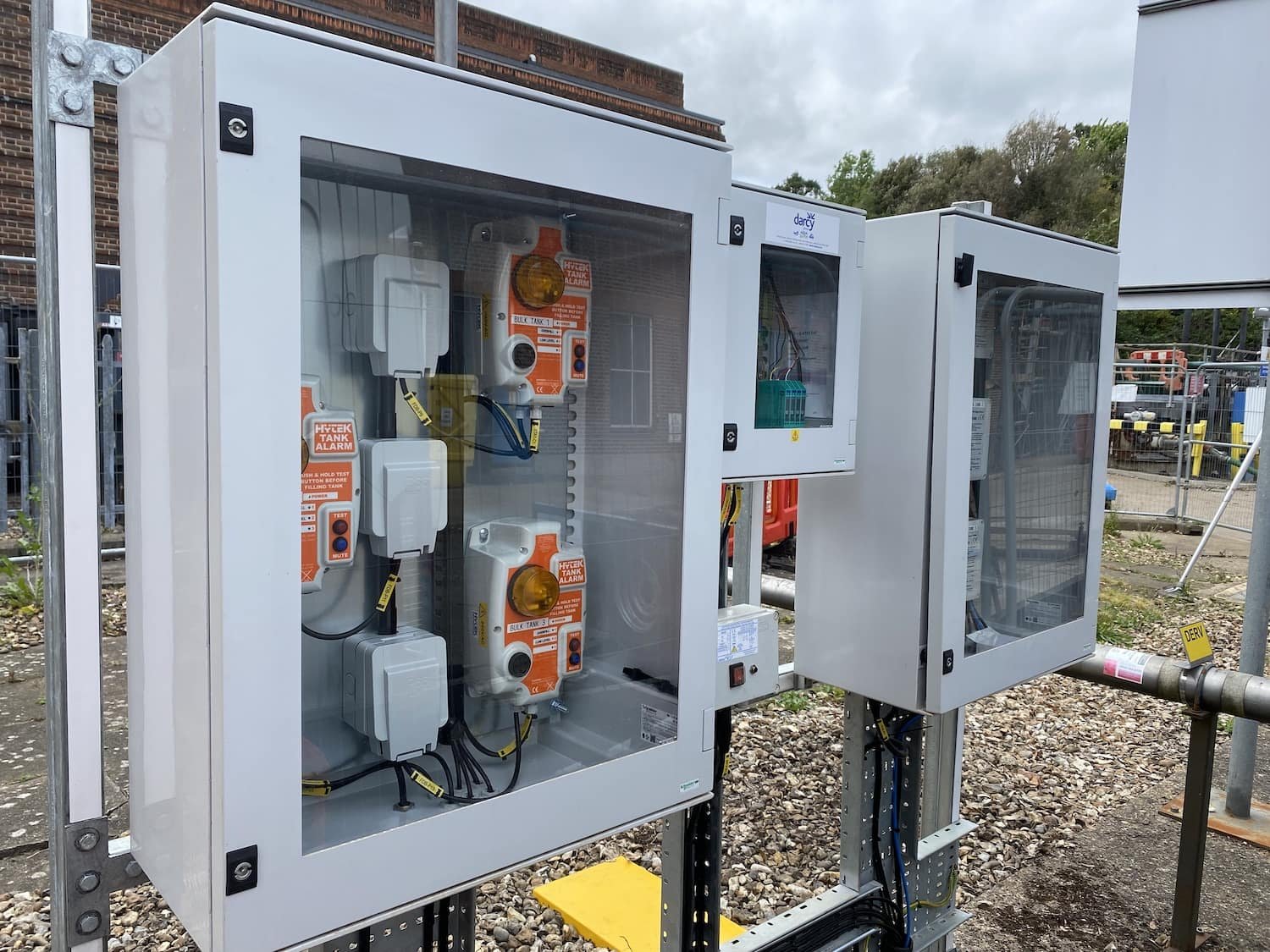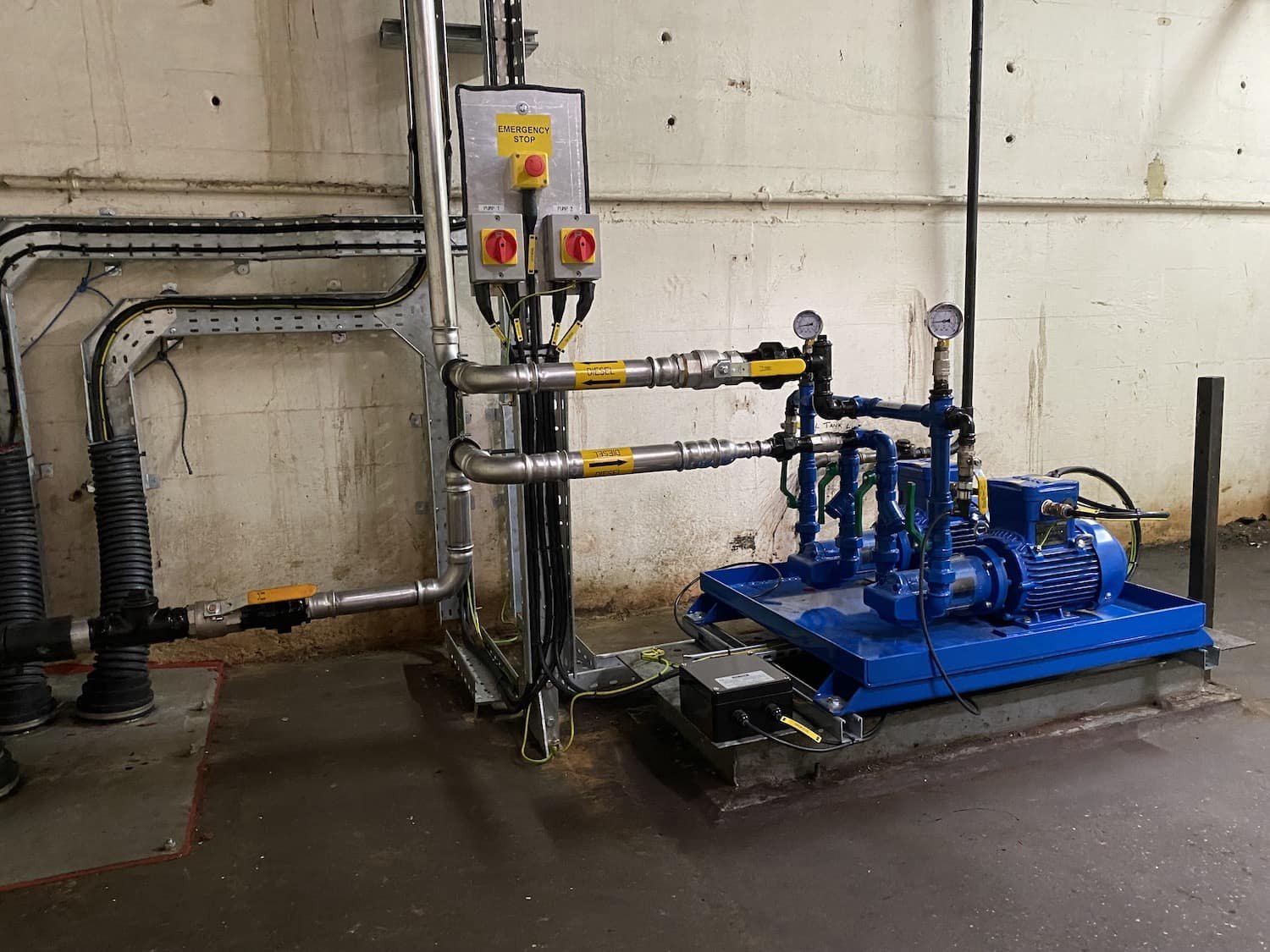
Upgrade to Thames Water Storm Engine storage and fuel transfer system
Thames Water’s Mogden Sewage Treatment Works is one of the UK’s largest sewage treatment works which processes waste for over 2.1 million customers a day. OTS were asked to review the current fuel supply system at the main pump station after Thames Water had identified that it was not fully optimised to work under the current environment.
-
Thames Water’s Mogden Sewage Treatment Works is one of the UK’s largest sewage treatment works which processes waste for over 2.1 million customers a day. The original part of the site was built in the 1930s and still today, the original assets are a critical part of managing the daily inbound flows. The main pump station at Mogden processes a high proportion of Mogden’s inbound flows which are managed by a collection of electric and diesel driven pumps, with 4 out of the 12 pumps using the original Harland and Wolf engines, each driving a 30-inch Worthington Simpson pump.
-
OTS were asked to review the current fuel supply system after Thames Water had identified that the system was not ideal to operate under the current environment. Thames Water requested a proposal to make the system compliant, more robust and meet the site requirements to provide clearer visibility of fuel storage and usage.
As part of the information received from Thames Water it was conveyed that considerable amounts of water contamination had been noted in the fuel system, therefore it was evident that further investigation and focus was needed into the current fuel systems integrity. This information put an emphasis on the condition of the 3 large 30,000 litre bulk tanks sited in an underground bunded area.
-
It was noted that the site has a high dependence on the diesel driven transfer pumps, especially in periods of high flows. OTS identified that a new fuel transfer system was needed to offer:
a high level of control;
visibility of quantities of fuel being stored;
and reliability of data being conveyed to the site Control system.
In addition, the proposed system would need to interact with both new and old assets alike and meet Thames Water assets standards.
-
We organised an intense tank cleaning and inspection phase, where extensive fuel polishing was implemented to ensure maximum fuel recovery was offered to Thames Water, plus an in-depth internal and external inspection of all 3 bulk fuel storage tanks.
Extraordinarily, the results from OTS’s investigation indicated that the bulk fuel storage tanks were in a relatively good condition for the age of the assets. Through this process we also helped recover over 60,000 litres of the contaminated fuel for use by Thames Water elsewhere on site. (Specialist contractor Ancorra used).
-
In order to achieve a high standard of installation OTS needed to determine where to install the new fuel transfer pump to bridge the old and new assets. This meant removing a proportion of old pipework and installing a Mapress stainless steel pipework system. This new setup seamlessly connects the bulk fuel storage tanks to the day tanks via the newly installed transfer system.
-
One of the issues that was highlighted in the initial intent of the project, was the occurrence of flooding within the bulk storage tanks bund. To overcome this concern, a flood detection alarm and signal was implemented in conjunction with an automatic specialist de-watering pump to reduce the risk of future flooding. This de-watering pump automatically stops if fuel is detected and signals an alarm to the main control panel. This feature will help Thames Water manage and contain any further spillages relating to this storage area.
-
As part of the overall scheme, advanced safety features were installed in the fuel transfer system and day tanks. These include a circuit of signals and alarms that prevent overfilling and detect low fuel levels and fuel contamination. This information then links back to the control panel to offer complete control and monitoring of the system. These alarm and signal systems not only provide a high level of fuel control, but they are also critical in avoiding fuel wastage and over-filling of the day tanks.
Alongside this, to save Thames Water both time and money, the new fuel transfer system automatically refuels the day tanks as and when needed.










